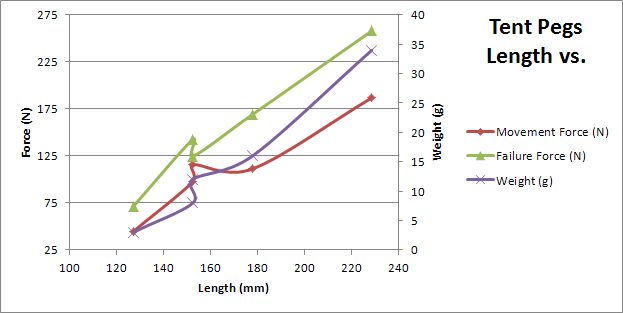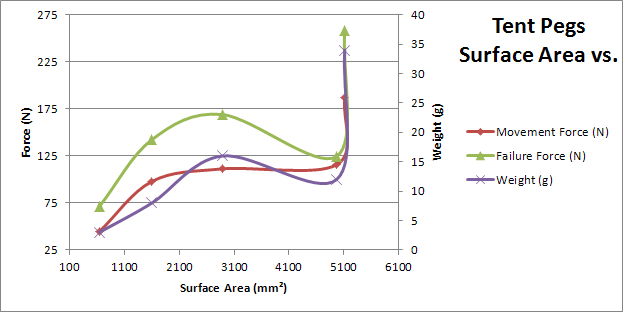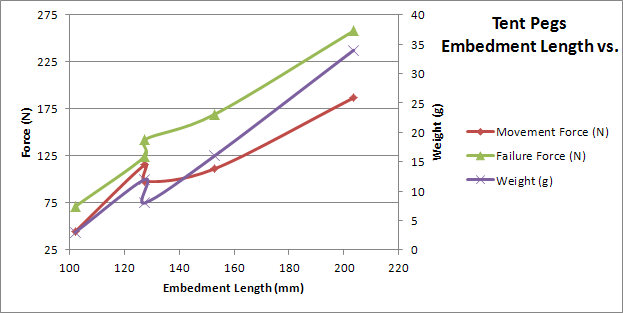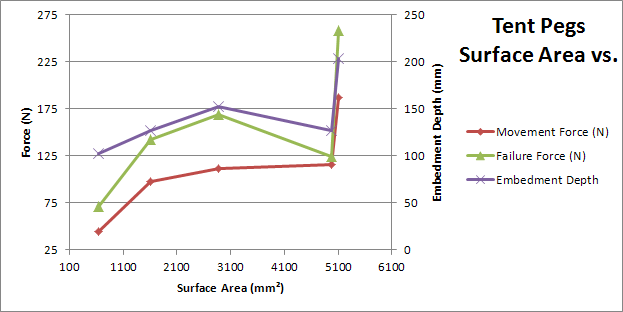http://bearbonesbikepacking.blogspot.co ... -test.html
So what I then decided to do, was to tabulate the results and make them metric. I then made excel draw some graphs with respect to Length being the x axis and then looking at how the length affects to weight and various failure forces.
There is a bit more to this than the simple graphs, as it's the surface area of the peg in contact with the ground that's the most critical factor. In essence, the larger the surface area of the peg in contact with the soil giving frictional resistance (particles towards the clay end of the particle size distribution will be best for this and give have higher skin friction than the sand end) which will give the higher resistance. It's pretty much piled foundation designs, but resultant forces have to be resolved as their at an incline, and the force is pulling upwards as opposed to downwards so there's no base bearing support...actually tension foundations aren't the norm in structures but I like using the application

My ten penneth worth.


